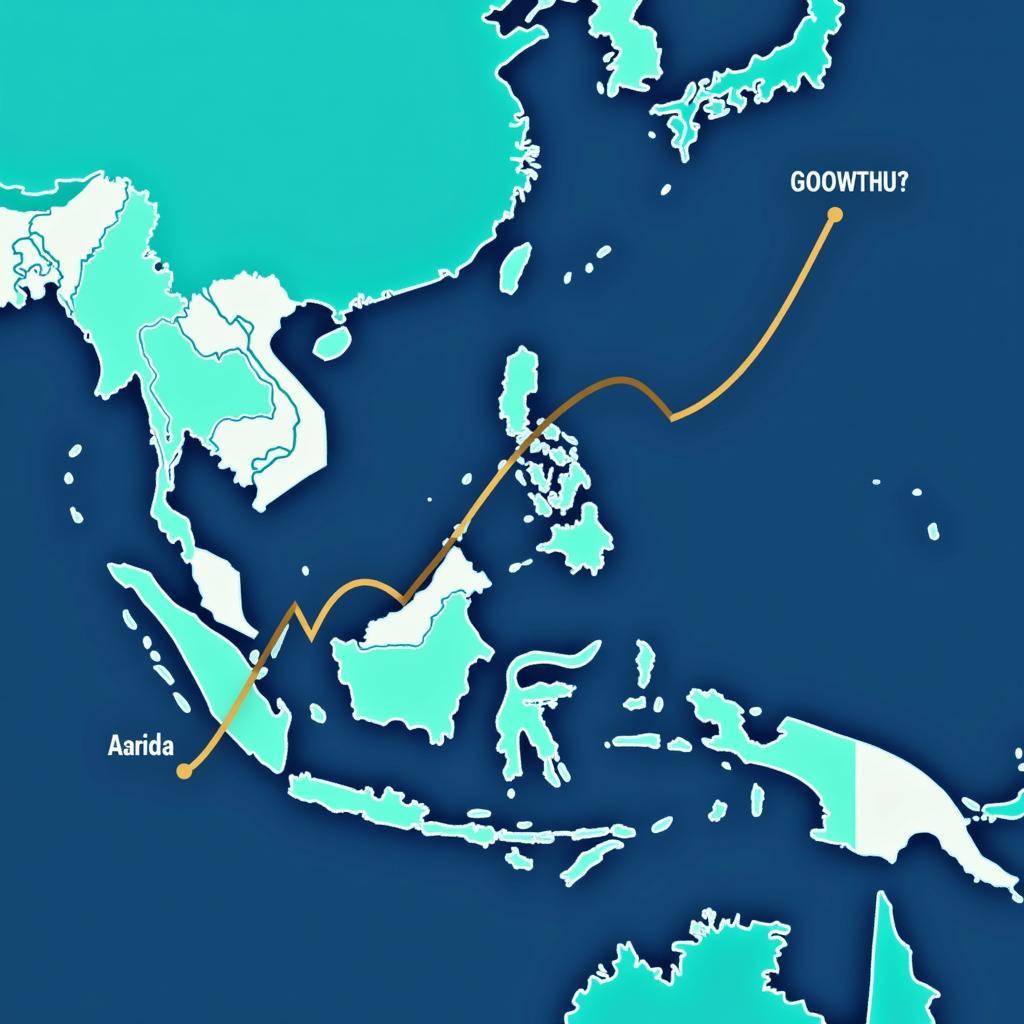The ASEAN economy has been on a remarkable growth trajectory in recent years, emerging as a global economic powerhouse. Understanding the Asean Economy Ranking 2023 provides valuable insights into the region’s economic landscape, opportunities, and challenges. This article delves into the factors influencing the ranking, key players, and future prospects.
Factors Shaping the ASEAN Economy Ranking
Several factors contribute to the dynamic ASEAN economy ranking, including:
- GDP Growth: A key indicator of economic health, GDP growth varies across ASEAN nations, influenced by domestic consumption, investment, and government spending.
- Population Dynamics: ASEAN boasts a large and youthful population, presenting a significant consumer base and a potential source of skilled labor. However, managing this demographic dividend requires effective policies in education and job creation.
- Foreign Direct Investment (FDI): ASEAN attracts substantial FDI due to its strategic location, competitive labor costs, and growing consumer markets. This inflow of capital fuels economic expansion and infrastructure development.
- Trade and Integration: The ASEAN Economic Community (AEC) aims to establish a single market and production base, fostering regional trade and economic integration.
- Digital Transformation: The rise of e-commerce, digital financial services, and the digital economy is transforming the ASEAN economic landscape, creating new opportunities and challenges.
Key Players in the ASEAN Economy
While the ASEAN economy ranking encompasses all ten member states, some economies consistently rank among the top performers:
- Indonesia: As the largest economy in ASEAN, Indonesia’s vast natural resources, growing manufacturing sector, and expanding middle class contribute to its economic prominence.
- Singapore: A global financial hub and a leader in innovation, Singapore consistently ranks high in terms of GDP per capita and ease of doing business.
- Malaysia: With a diversified economy encompassing manufacturing, services, and commodities, Malaysia continues to attract foreign investment and maintain steady economic growth.
- Thailand: Known for its manufacturing prowess, particularly in the automotive and electronics sectors, Thailand is a major player in regional and global supply chains.
- Vietnam: Vietnam’s remarkable economic transformation, fueled by export-oriented manufacturing and a young, dynamic workforce, has positioned it as a rising star in the region.
The Future of the ASEAN Economy: Opportunities and Challenges
The ASEAN economy faces a promising future with immense growth potential. However, several challenges need to be addressed:
- Geopolitical Uncertainties: Global trade tensions and geopolitical shifts can impact ASEAN’s export-oriented economies.
- Infrastructure Gaps: Bridging infrastructure gaps, particularly in transportation and logistics, is crucial to support sustainable and inclusive growth.
- Skills Development: Equipping the workforce with the skills required for the digital economy and Industry 4.0 is essential to maintain ASEAN’s competitive edge.
- Sustainability: Balancing economic growth with environmental sustainability is paramount for ASEAN’s long-term prosperity.
Conclusion
The ASEAN economy ranking 2023 reflects the region’s dynamic economic landscape, driven by factors such as GDP growth, FDI inflows, and digital transformation. While key players like Indonesia, Singapore, and Vietnam continue to shape the regional order, ASEAN as a whole presents significant opportunities for investors and businesses seeking growth in a vibrant and interconnected market. Addressing challenges related to infrastructure, skills development, and sustainability will be crucial to unlocking ASEAN’s full economic potential.
FAQ
1. What are the criteria used to determine the ASEAN economy ranking?
2. How has the COVID-19 pandemic impacted the ASEAN economy ranking?
3. What role does the Regional Comprehensive Economic Partnership (RCEP) play in ASEAN’s economic future?
4. What are the key sectors driving growth in the ASEAN economy?
5. What are the investment opportunities in the ASEAN region?
Need help with ASEAN insights? Contact us at Phone Number: 0369020373, Email: aseanmediadirectory@gmail.com or visit our office at Thon Ngoc Lien, Hiep Hoa, Bac Giang, Vietnam. Our customer service team is available 24/7.
